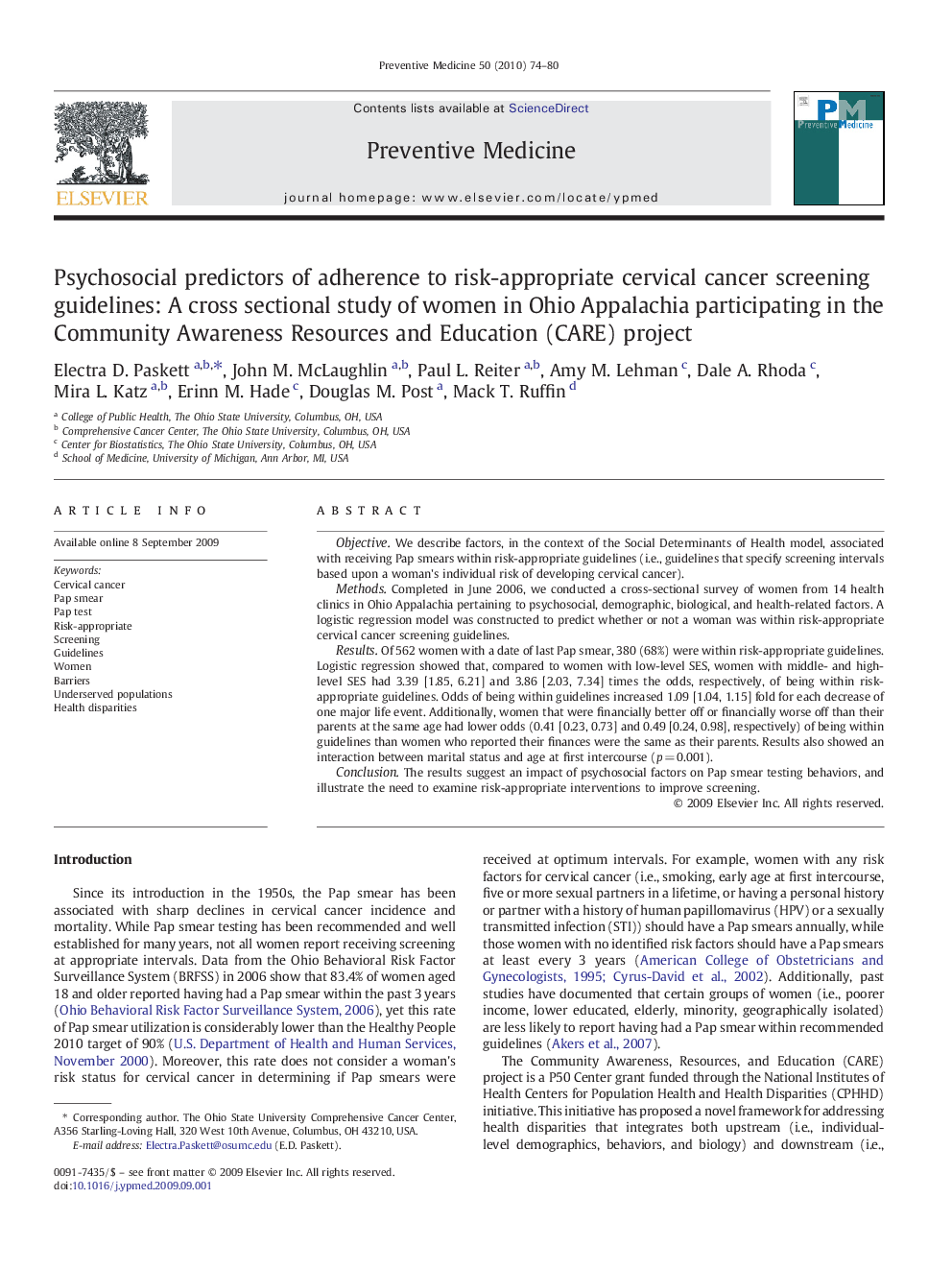| Article ID | Journal | Published Year | Pages | File Type |
|---|---|---|---|---|
| 3101228 | Preventive Medicine | 2010 | 7 Pages |
ObjectiveWe describe factors, in the context of the Social Determinants of Health model, associated with receiving Pap smears within risk-appropriate guidelines (i.e., guidelines that specify screening intervals based upon a woman's individual risk of developing cervical cancer).MethodsCompleted in June 2006, we conducted a cross-sectional survey of women from 14 health clinics in Ohio Appalachia pertaining to psychosocial, demographic, biological, and health-related factors. A logistic regression model was constructed to predict whether or not a woman was within risk-appropriate cervical cancer screening guidelines.ResultsOf 562 women with a date of last Pap smear, 380 (68%) were within risk-appropriate guidelines. Logistic regression showed that, compared to women with low-level SES, women with middle- and high-level SES had 3.39 [1.85, 6.21] and 3.86 [2.03, 7.34] times the odds, respectively, of being within risk-appropriate guidelines. Odds of being within guidelines increased 1.09 [1.04, 1.15] fold for each decrease of one major life event. Additionally, women that were financially better off or financially worse off than their parents at the same age had lower odds (0.41 [0.23, 0.73] and 0.49 [0.24, 0.98], respectively) of being within guidelines than women who reported their finances were the same as their parents. Results also showed an interaction between marital status and age at first intercourse (p = 0.001).ConclusionThe results suggest an impact of psychosocial factors on Pap smear testing behaviors, and illustrate the need to examine risk-appropriate interventions to improve screening.
